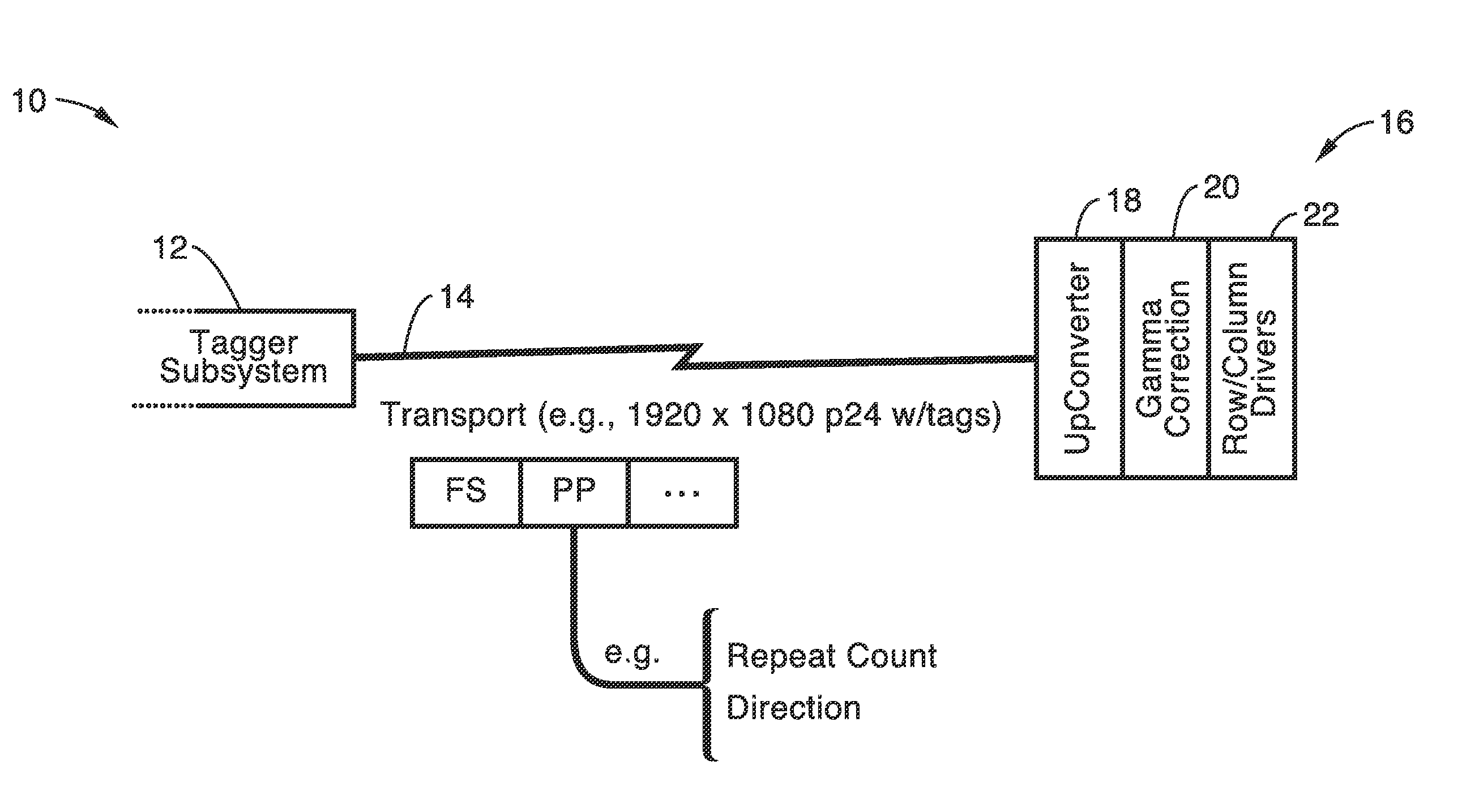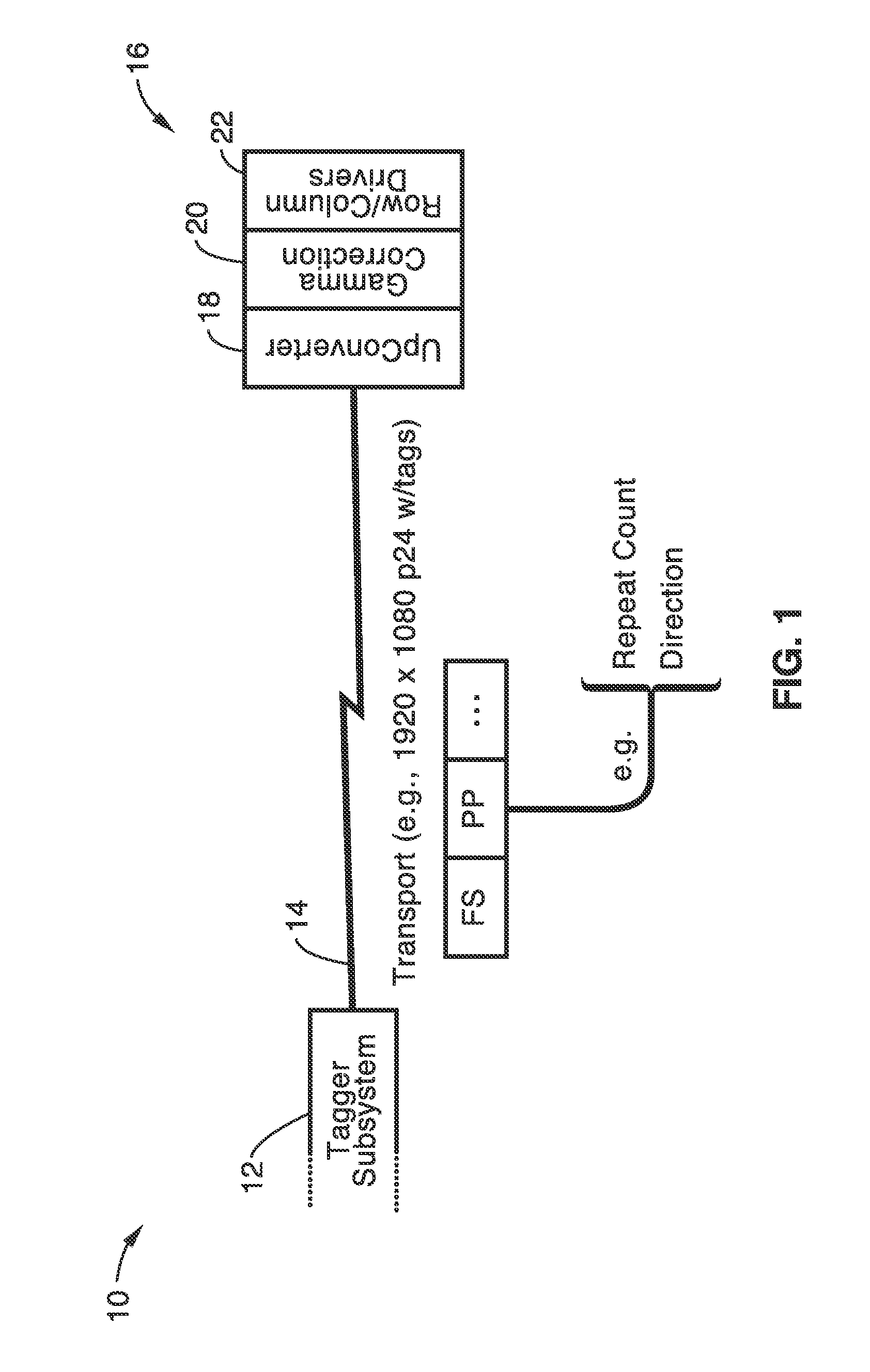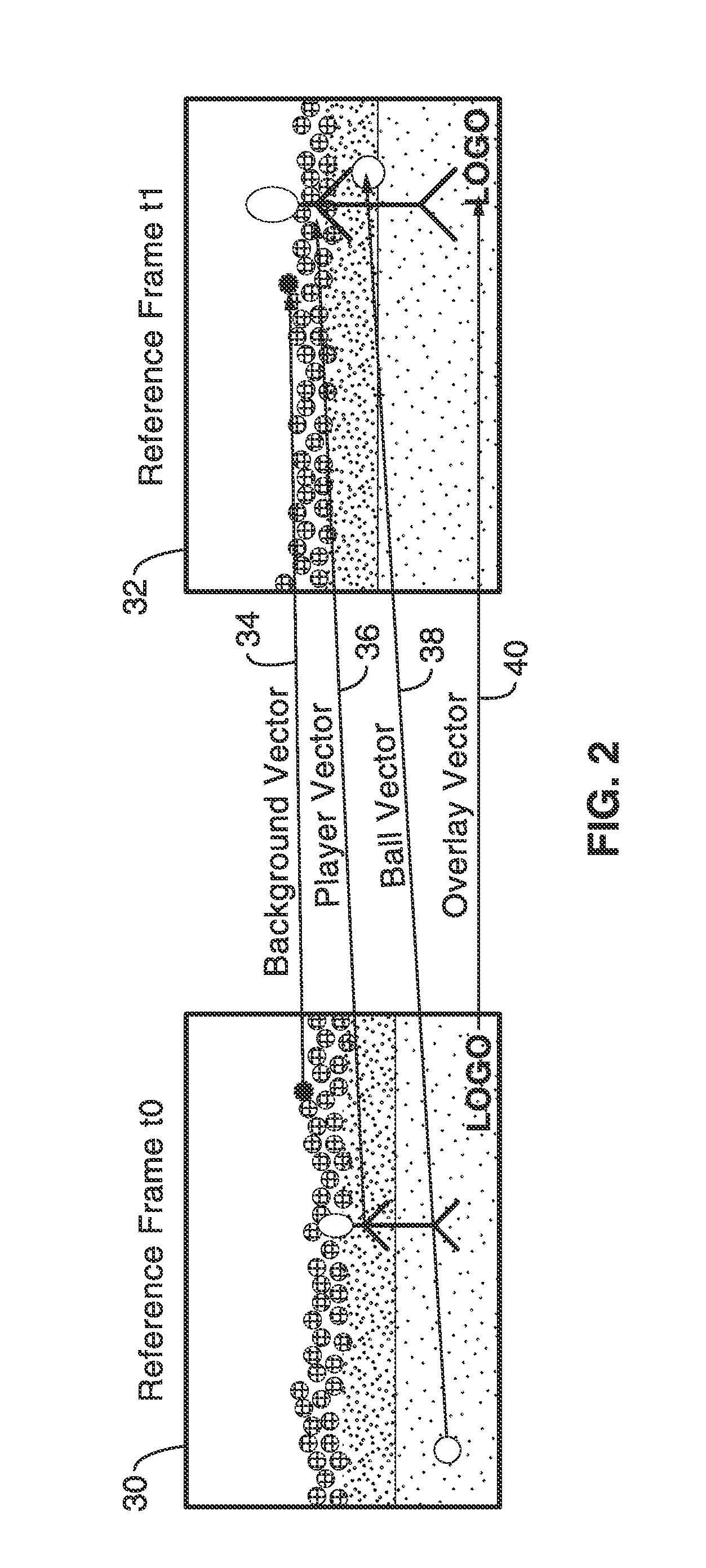System and method of video data encoding with minimum baseband data transmission
a video data and data transmission technology, applied in the field of display video, can solve the problems of limiting the communication bandwidth of the display device, affecting the satisfaction of these increasing user desires, and their own problems, so as to improve the effective refresh rate, minimize the bandwidth required, and boost the display frame rate
- Summary
- Abstract
- Description
- Claims
- Application Information
AI Technical Summary
Benefits of technology
Problems solved by technology
Method used
Image
Examples
Embodiment Construction
[0059]Referring more specifically to the drawings, for illustrative purposes the present invention is embodied in the apparatus generally shown in FIG. 1 through FIG. 6. It will be appreciated that the apparatus may vary as to configuration and as to details of the parts, and that the method may vary as to the specific steps and sequence, without departing from the basic concepts as disclosed herein. Tables are included at the end of this specification.
[0060]1. Introduction.
[0061]A method of video data encoding and processing to drive high frame rate displays while necessitating only a minimum baseband data transmission that includes information tags. This invention relies on frame and pixel tags to minimize the amount of data that needs to be transported to a display device while still providing detailed control of the up-conversion process.
[0062]As the present invention is preferably utilized for minimizing video bandwidth communicated into the midst of the video display device, i...
PUM
 Login to View More
Login to View More Abstract
Description
Claims
Application Information
 Login to View More
Login to View More - R&D
- Intellectual Property
- Life Sciences
- Materials
- Tech Scout
- Unparalleled Data Quality
- Higher Quality Content
- 60% Fewer Hallucinations
Browse by: Latest US Patents, China's latest patents, Technical Efficacy Thesaurus, Application Domain, Technology Topic, Popular Technical Reports.
© 2025 PatSnap. All rights reserved.Legal|Privacy policy|Modern Slavery Act Transparency Statement|Sitemap|About US| Contact US: help@patsnap.com



